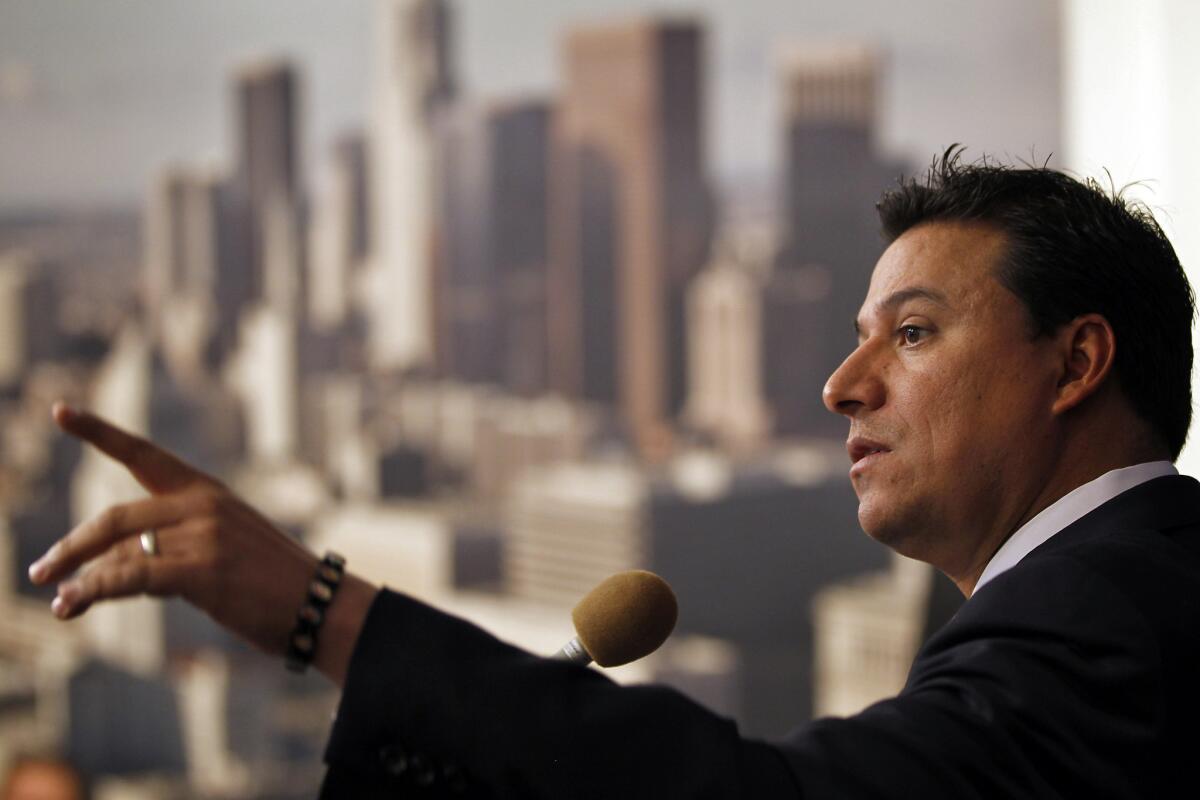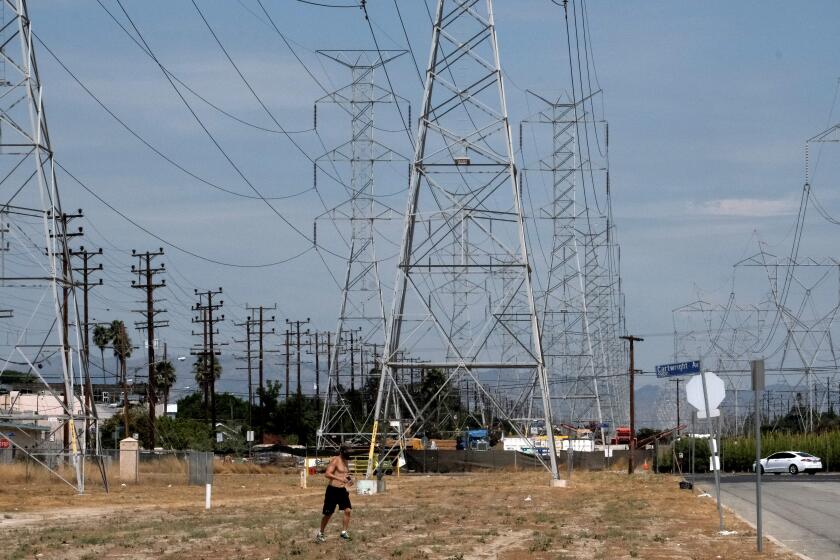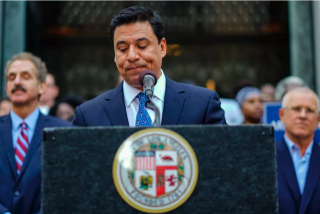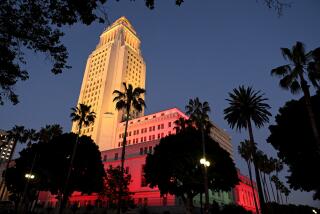Editorial: Tired of pay-to-play corruption? Take L.A. politicians out of development decisions

- Share via
It’s no secret that real estate development in L.A. is ripe for pay-to-play political corruption.
For too long, the city’s outdated land-use rules have been treated as mere suggestions. Instead, development decisions have more typically been controlled by City Council members, who treat their districts as fiefdoms in which they alone have discretion to decide whether a project gets built or blocked.
Council members have tremendous power to make or break real estate projects, and that influence — over decisions that can cost developers millions of dollars — invites corruption. Usually, developers try to win the favor of an elected official through legal means, including campaign contributions and donations to a politician’s favorite charity.
In the case of Councilman Jose Huizar, who is facing federal charges of bribery, money laundering and racketeering, prosecutors allege that he turned his power over development decisions into a criminal enterprise that raked in more than $1.5 million in cash and other benefits from companies looking to build in L.A. He has pleaded not guilty.
The Huizar indictment stands as the extreme example of a broken system in L.A. The city needs to fundamentally change how development projects are approved. It needs clear, modern and objective rules that spell out what can be built where. If a project meets the criteria, then there should be no need to kiss the council member’s ring. The approval should be granted by the city staff. And if it doesn’t meet the criteria, there should be specific conditions and a public process to qualify for an exception.
Voluntary treatment is always the first choice. But when severely ill people reject that, we need better tools.
There are hopeful signs that L.A. might be moving in that direction. Last week Council President Nury Martinez unveiled three proposals to make council approvals of major development projects more transparent and, while not completely immune to council members’ meddling, less subject to their discretion.
The more exciting change is happening in downtown, where the Planning Department has unveiled a new community plan that could be a model for development reform citywide.
The Downtown Community Plan — also known as DTLA 2040 because it would set the vision for the next 20 years — would be the first plan in the city to do away with the city’s Byzantine 800-plus-page zoning code in favor of a more modern one that makes development rules easier for builders and the public to understand.
The new plan is also designed to be more transparent. It lays out what can be built on a particular property and what “community benefits” the developer must provide to build more than what’s allowed by right. The amount of the required community benefits — such as affordable housing units, open space and other community-endorsed options — would be tied to the degree to which the developer wanted to exceed the planned limits for that property.
California’s rolling blackouts aren’t a reason to back away from green energy and return to dirty power.
The goal is to make the rules clear and do away with the case-by-case negotiation between the developer and the council member. It would also prioritize building affordable housing, which residents have been clamoring for. Under the current system, high-rise developers downtown pay community benefit fees, but the majority of the money has gone to redesigning Pershing Square and the proposed street car — two of Huizar’s pet projects.
The new plan wouldn’t do away with council members’ votes altogether. Some large-scale projects would still have to win City Council approval, as would projects that need variances or conditional-use permits, such as nightclubs. But it would provide more certainty, which could be good for developers and the community.
The downtown community plan is expected to be considered by the City Planning Commission this fall, but it’s still a work in progress. There are already debates over the affordability requirements — business groups say the plan demands too much of developers, and affordable housing advocates say it demands too little. Downtown is also home to skid row, Chinatown and other low-income communities of color that have been harmed by planning and development in the past. The city needs to ensure they have an equitable voice in their future.
L.A.’s culture of pay-to-play has not served communities well. It doesn’t produce enough housing and doesn’t result in well-planned, equitable neighborhoods. Worse, it breeds distrust in city government. As the new downtown community plan shows, there is a better way to build L.A.
More to Read
A cure for the common opinion
Get thought-provoking perspectives with our weekly newsletter.
You may occasionally receive promotional content from the Los Angeles Times.











